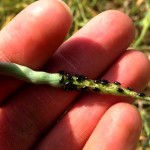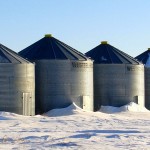
A costly approach to dealing with crop insects and weeds
A head-in-the-sand approach to unfamiliar insects, diseases and weeds simply won't do. Be observant. Early identification and fast action — when required — are best

A busy year for flea beetles in canola
Beetles galore! Best practices for 2016 remain seed treatment and good stand establishment

The right amount of harvest loss
Here’s how to find that optimum balance between harvest efficiency and lower field losses

Are you ‘always wrong’ at camp sclerotinia?
Your decision to spray essentially comes down to one simple equation

Is your soil lacking phosphorous? How to diagnose nutrient deficiency
Phosphorus deficiency is hard to identify and often goes unnoticed — even when significant yield loss can be occurring. Will an extra 20 lbs./ac. of phosphate pay off?

Your soil needs crop diversity
Stacked rotations may be worth more research, but until then, diversity is your best profit management tool

The ultimate N rate for canola
If we could predict the weather perfectly, it might be different, but in the real world, the best tool to determine nitrogen rates is the soil test. It’s a great starting point for 2015

Managing your binned canola to prevent losses
A lot of high-risk canola went into bins in 2014, and by November, reports of heated canola had already started to pick up. Have you checked your bins lately?

Herbicide-resistant weeds are our biggest threat
There’s no reason why the West must become an Arkansas-style nightmare because of weed resistance, but we may be heading there anyway

Cut canola later, combine slower come harvest
Canola harvest losses can be a lot worse than you think. Swathing later is one way to boost yield. Refining your combine ground speed and other settings is another

